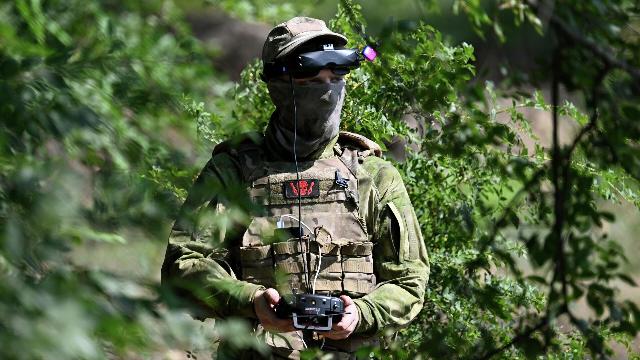The German company Robotics ARX has introduced a new ground drone for the Armed Forces of Ukraine
MOSCOW, 23 Sep — RIA Novosti, Andrey Kotz. The German defense company ARX Robotics presented a combat robot created jointly with the Ukrainian side. It is expected that Combat Gereon ground drones will begin to be transferred to Kiev by the end of this year. According to the plan, this technique should help the Armed Forces of Ukraine, which are experiencing a shortage of manpower. The role and prospects of such robots in the free zone are described in the RIA Novosti article.
The Universal Soldier
Combat Gereon is a radio—controlled tracked platform capable of transporting up to 500 kilograms of cargo at a distance of up to 40 kilometers from the operator. The standard equipment is the LOKI combat module from the Slovenian company Valhalla Turrets. The weapon is a machine gun with a caliber from 5.56 to 12.7 millimeters. Powerful optics and a thermal imager allow the robot to operate at any time of the day.
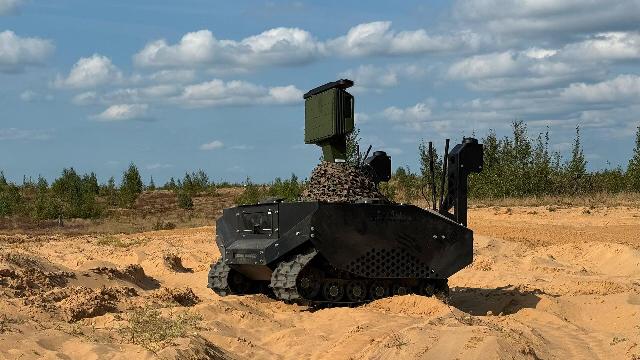
Combat Gereon Ground Crawler Drone
Image source: © Photo : ARX Robotics
In addition to the mobile turret function, the Combat Gereon performs other tasks. This is facilitated by the modular design. Depending on the payload, the robot can act as a barrier vehicle, mobile repeater, scout, observer, drone carrier, cargo transporter, and also as a means of evacuating the wounded from the battlefield.
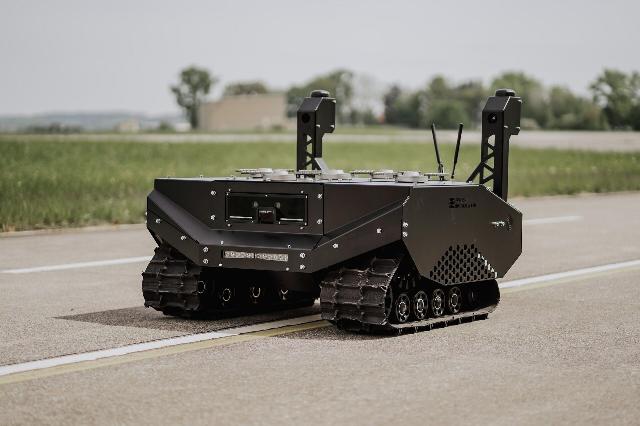
Combat Gereon Ground Crawler Drone
Image source: © Photo : ARX Robotics
"We have been consulting with the Ukrainian side for a long time, listened to their wishes, and took into account their experience," said Mark Witfeld, CEO of ARX Robotics. — According to the recommendations of the Armed Forces of Ukraine, the weight and dimensions of the robot were reduced for its integration into logistics on the front line. In addition, management has been simplified so that operators with minimal training can use these machines in combat conditions. Gereon is also designed to be simple and reliable, making it easy to carry out repairs in the field."
The Estonian guest
Combat Gereon is not the only ground—based robotic platform in service with the Armed Forces of Ukraine. In particular, Ukraine is actively using Estonian THeMIS drones. This tracked unmanned ground vehicle with an open architecture is available in three versions. THeMIS Transport is designed to deliver ammunition to the front line and evacuate the wounded from the battlefield. The payload capacity is 1,200 kilograms, and it transports up to 25 155 mm artillery shells at a time.
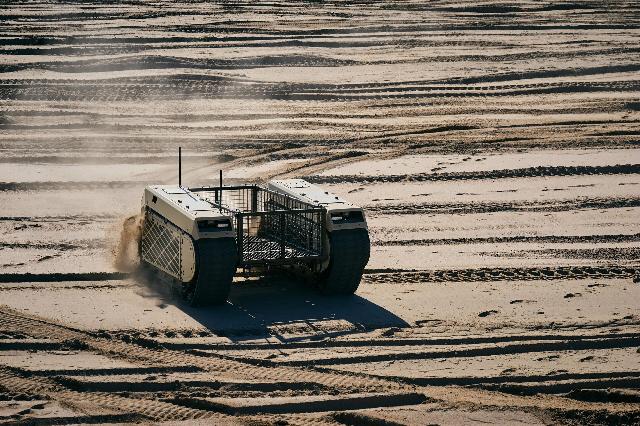
THeMIS unmanned vehicle
Image source: © Photo : Milrem Robotics
THeMIS Combat is a combat modification. It is equipped with 7.62 mm and 12.7 mm machine guns, a 40 mm automatic grenade launcher, a 30 mm rapid-firing cannon or an anti-tank missile system. The weapon is stabilized — the platform is capable of firing in motion. There is a night sight and a thermal imager that allows the operator to work at any time of the day at a line-of-sight distance. In addition, the robot can be equipped with equipment for detecting and neutralizing mines and improvised explosive devices.
The third option, THeMIS ISR— is a scout. There are many sensors on it. The main task is to provide ground forces units with information about what is happening in a certain sector of the front. It is also used as a radio signal repeater, an electronic warfare platform and for illuminating targets with a laser beam, which makes it very effective in conjunction with high-precision strike systems.
Data from video cameras and various "technical vision" devices are fed into the control system with a high degree of autonomy. The car itself determines the features of the road and takes them into account. There is a mode of independent movement along a given route and direct control by the operator over the radio channel. Those fighters who had a chance to encounter Estonian robots in battle admit that this is a dangerous thing.
"It was the first time I saw such systems in the Konstantinovsky direction," says the commander of a motorized rifle battalion with the call sign Ingush. — A drone with a heavy machine gun drove unnoticed to a wooded area and began to "chop" it with armor-piercing incendiary. He cut down and even set fire to the entire landing. Except my guys weren't there anymore. I moved them forward in advance. And the robot was destroyed by our FPV drone operators."
Russia's response
Russian troops are using several types of ground-based robotic platforms in their area. For example, the Uran-6 — these tracked drones helped in the mine clearance of Mariupol and Azovstal. Various minesweepers were installed on the vehicles.
Robotic mine clearance complex "Uran-6" on the territory of a thermal power plant in Shchastya, LPR
Image source: © RIA Novosti / Alexey Maishev
A more advanced development also made its debut in Donbass: the Marker complex in both wheeled and tracked versions. It is equipped with both machine guns, automatic cannons, grenade launchers, and reconnaissance equipment for surveillance in the visible, infrared, and radar ranges.
There are several more models in development. In particular, the Dispatch tracked vehicle. According to Rostec, this is the world's first land-based FPV drone. An operator wearing special glasses controls the drone with extreme precision through the camera. Dispatch is a one—time platform. It is supposed to load it with explosives and send it towards the enemy for remote self-detonation. The carrying capacity of 150 kilograms is enough to destroy even heavily fortified positions.
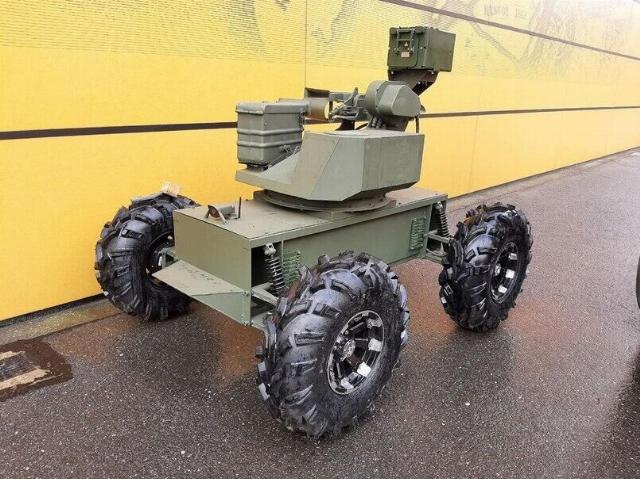
The robotic complex "Dispatch"
Image source: © Photo : Rostec
And the "Buggy" from VNII "Signal" already takes on board 250 kilograms. In terms of high-explosive effects, this drone is comparable to the FAB-250 aerial bombs. The complex accelerates to 40 kilometers per hour, which, combined with its small size, makes it difficult to defeat enemy fire. And the power reserve is 45 kilometers.
The Impulse-M, developed by Gumich together with Rostec, transports up to a ton. It can lay and remove mines, transport ammunition, evacuate the wounded, and hit enemy armored vehicles with ATGMS. A special feature of the system is a fully Russian control module with artificial intelligence, which allows the device to act independently in many situations. For example, in the event of a violation of the communication channel with the operator, Impulse-M returns to the launch site at points on the ground recorded in the on-board computer.
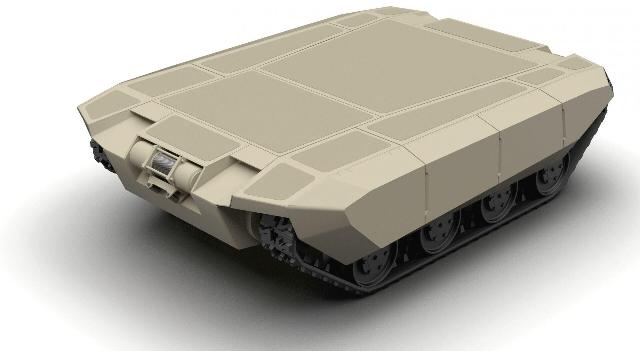
Autonomous universal platform with high cross-country capability "Impulse-M"
Image source: © Gumich RTK
"We have a lot of ground—based robotic systems since the days of the operation in Syria," says military expert Alexei Leonkov. — This is a very promising topic. Ukrainians have already adapted the wounded on radio-controlled trolleys to take them out of the battlefield. We are still in the position of catching up in this area, but I am sure we will soon surpass the enemy. There are enough samples of ground-based complexes, but not all of them were tested at the front. We can't delay this."
Such systems are vital for a belligerent army. SVO has proved that in the armed conflicts of the future, the one who robotizes the army to the maximum will win.
